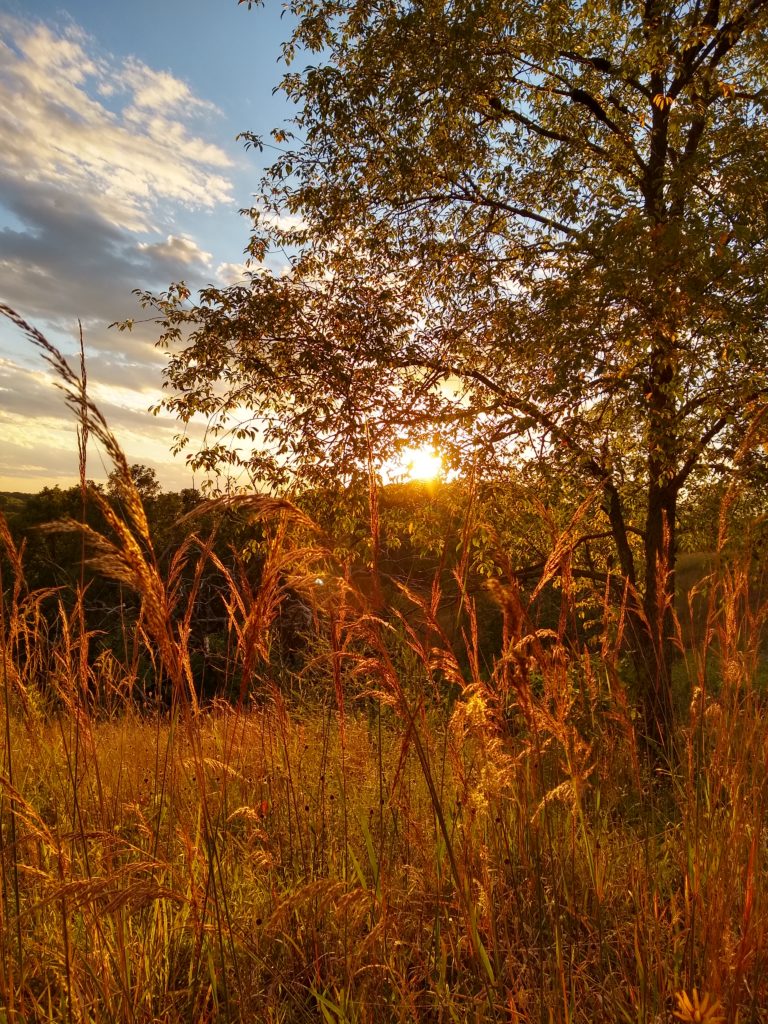The land around Lake Edith in Afton is the start of the Minnesota Blufflands, a landscape comprised of prairies, oak savannas, coulees and woodlands. As the last glaciers melted 12,000 years ago, sand and gravel spewed across the landscape. Oak trees thrived on that dry soil, and regular fires kept the underbrush back while allowing the flame-tolerant trees to grow tall and wide—forming oak savanna.

There were roughly 80,000 square miles of oak savanna in the Midwest when Native Americans and bison called the area home. The savanna was located mostly where the forests of the east met the prairies of the west. It is a “transitional” landscape.
The savanna was also prime land for European settlers who could live in the shady woods and farm the fertile prairies. These days, less than 0.01% of the original savanna and prairie remain, and oak savanna is considered the most endangered ecosystem in the Midwest.
This extraordinary landscape is the site of Belwin’s Savanna Hills. It’s not only beautiful, but it is critically important habitat for birds, wildlife, grasses, flowers, and other plants. The Red-headed Woodpecker, an endangered species, thrives in oak savanna, where it can forage on the ground, eat acorns and even hunt flying insects.
An endangered ecosystem means it is likely to become extinct. Without such places, certain plant and animal life, like Red-headed Woodpeckers, might no longer exist. A complete ecosystem contains all the pieces necessary for their survival. If the savanna and prairies go, then all the plants, birds and insects that rely on this system also go away.
While we might not know what this means exactly, we do know we had a chance to restore a place that was on the verge of extinction but that is now coming back to life.
Even though the lands were infested with non-native species and otherwise degraded, Belwin acquired various properties between 2002 and 2008 that now make up the Savanna Center property. We’ve cleared buckthorn, burned brush, seeded, monitored, and are now moving into maintaining this rare ecosystem. With your help, we will continue to bring back the oak savanna and prairie that once were the dominant feature of this place.
Our work is showing signs of success! In 2011, a juvenile Red-headed Woodpecker was spotted on the property. Not only that, these Red-headeds are being spotted in nearby areas as well.